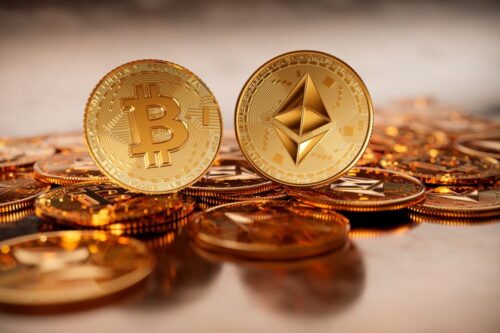The Ethereum blockchain, a vibrant ecosystem teeming with innovation, hosts a plethora of tokens beyond its native Ether (ETH). These tokens serve diverse purposes, ranging from powering decentralized finance (DeFi) applications to facilitating unique ownership models for digital assets. However, navigating this tokenized landscape can be daunting, especially when faced with the acronyms ERC-20 and ERC-721. Fear not, intrepid explorer, for this article will equip you with the knowledge to confidently chart your course!. Additionally, to effectively invest and trade in Ethereum, you must have a reliable trading platform such as ethereum-trader.app.
Fungibility: The Cornerstone of Distinction

The fundamental difference between ERC-20 and ERC-721 tokens lies in their fungibility: the ability to be exchanged or replaced with an identical item of equal value. Think of a dollar bill; any dollar is interchangeable with another, holding the same purchasing power. This is akin to ERC-20 tokens, often representing virtual currencies or financial instruments like stablecoins. Each ERC-20 token is identical to its counterparts, enabling seamless trading and fungible operations within DeFi platforms.
In stark contrast, ERC-721 tokens are non-fungible, meaning each token is unique and irreplaceable. Imagine a one-of-a-kind piece of digital art; its intrinsic value stems from its distinct identity, rendering it impossible to simply swap it for another artwork. This makes ERC-721 tokens the perfect candidates for representing and tracking ownership of unique digital assets, giving rise to the exciting world of NFTs (Non-Fungible Tokens).
Divisibility: Slicing the Pie
Another crucial aspect is divisibility: the ability to split a token into smaller units. ERC-20 tokens shine in this domain, allowing for fractional ownership and facilitating precise transactions. You can trade 0.01 ETH or send 5 DAI (a stablecoin pegged to the US dollar) – the granularity is immense. Conversely, ERC-721 tokens are typically indivisible. Owning a CryptoKitty, the OG NFT project, means possessing the entire digital feline, not just a fraction of its paw.
Use Cases: Where the Action Is
Understanding the distinct properties of each token standard paves the way for exploring their diverse use cases:
ERC-20:
- Currency & Payments: Stablecoins like USDC and USDT offer a decentralized alternative to traditional fiat currencies, enabling borderless payments and financial inclusion.
- Decentralized Finance (DeFi): Lending, borrowing, and yield generation protocols leverage ERC-20 tokens to create innovative financial instruments and unlock new possibilities for wealth management.
- Governance & Voting: Many decentralized organizations (DAOs) utilize ERC-20 tokens as voting rights, allowing token holders to participate in critical decision-making processes.
ERC-721:
- NFTs: From digital art and collectibles to in-game items and metaverse real estate, ERC-721 tokens provide secure ownership and verifiable provenance for unique digital assets.
- Supply Chain Management: Tracking the movement of physical goods through the supply chain can be revolutionized by embedding unique ERC-721 tokens in individual items.
- Ticketing & Event Management: Securely issuing and managing tickets for events, concerts, and conferences becomes a breeze with non-fungible tokens.
Dive Deeper: Decoding the Nuances of ERC-20 and ERC-721 Tokens
Beyond the fundamental differences in fungibility and divisibility, delving deeper into the technical aspects of ERC-20 and ERC-721 reveals further distinctions that shape their specific applications.
Technical Underpinnings:
- ERC-20: Built upon a simple interface with six core functions governing transfer, approval, and balance queries, ERC-20 tokens prioritize efficiency and interoperability. Their standardized code facilitates seamless integration with various platforms and wallets, fostering a vibrant DeFi ecosystem.
- ERC-721: Embracing more complexity, the ERC-721 standard introduces additional functionalities like token ownership tracking, metadata capabilities, and transfer approval mechanisms. This enables intricate functionalities like breeding CryptoKitties and managing fractional ownership of NFTs through sub-tokens.
Diving into Use Cases:
ERC-20:
- Real-world Assets Tokenization: From loyalty points and rewards programs to fractional ownership of physical assets like real estate, ERC-20 tokens offer innovative pathways for digitizing and democratizing access to tangible assets.
- Prediction Markets & Decentralized Betting: Platforms leveraging ERC-20 tokens foster prediction markets where users can speculate on real-world events and stake their holdings for potential returns.
- Governance & Community Building: DAOs utilizing ERC-20 tokens empower token holders to participate in governance decisions, shaping the future of the organization and fostering a sense of collective ownership.
ERC-721:
- Gaming & Metaverse Integration: NFTs powered by ERC-721 unlock unique in-game items, customizable avatars, and virtual land ownership within metaverse platforms, enriching the immersive experiences these environments offer.
- Digital Identity & Credentialing: Securely storing and managing personal data like educational certificates or medical records on the blockchain via ERC-721 tokens can revolutionize identity management and empower individuals with greater control over their information.
- Fractional Ownership of High-Value Assets: Expensive artwork, rare collectibles, or even iconic music rights can be fractionalized into ERC-721 tokens, enabling broader participation in investment opportunities previously inaccessible to many.
Beyond the Binary: Emerging Standards
While ERC-20 and ERC-721 remain dominant, newer standards like ERC-1155 are emerging. Blending fungibility and non-fungibility, ERC-1155 tokens offer enhanced flexibility, making them ideal for representing collections of assets with varying properties. The tokenized landscape is constantly evolving, beckoning exploration and innovation.
Embracing the Tokenized Future
Whether you’re a seasoned blockchain enthusiast or a curious newcomer, understanding the nuances of ERC-20 and ERC-721 tokens unlocks a universe of possibilities. From financial revolution to digital ownership models, these versatile standards empower individuals and communities to reshape the way we interact with value and assets. So, delve into the tokenverse, embrace its diverse forms, and let the exploration begin!





